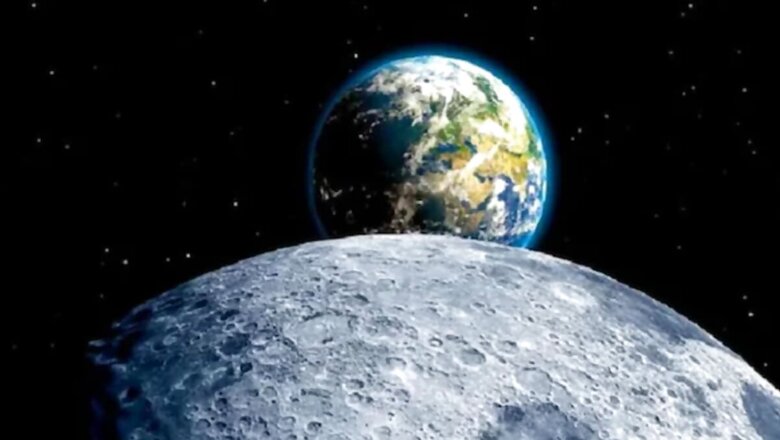
views
Revealing a strong relationship between the Moon and the Earth, Indian researchers found a significant drop in temperatures on the lunar surface during the COVID-19 lockdown. A recent study published in the Monthly Notices of the Royal Astronomical Society: Letters showed a drop of 8-10 Kelvin in the moon’s nighttime surface temperature during the global lockdown of April to May 2020. The study’s findings stemmed from analysing data from NASA’s Lunar Reconnaissance Orbiter.
K Durga Prasad and G Ambily, the scientists from the Physical Research Laboratory (PRL), analysed nighttime surface temperatures at six different sites on the Moon’s nearside between 2017 and 2023.
The study stated that a decrease in human activities led to a dip in greenhouse gas emissions and aerosols during the lockdown, which seemed to have reduced the radiation emitted from Earth, thus cooling the Moon. “Earth and Moon exhibit an interlinked history, as they have shared the same cosmic environment since their origin. Earth, having a rapidly changing climate, is now incapable of reproducing our evolutionary history. Recent studies have shown that the radiation emitted from Earth can have a significant impact on the lunar surface temperatures,” read the research report.
According to the study, the decrease in cloud cover and pollutants directly affected the outgoing TR (terrestrial radiation). “During the lockdown, the shortwave radiation exhibited a decrease of around 17 – 20 per cent due to the global depletion in clouds and aerosols, and longwave radiation was also correspondingly decreased owing to the reduced greenhouse emissions. Since the lunar surface is an amplifier of TR signature, it is expected that this mechanism would probably affect the lunar surface,” it added.
Speaking about the findings, PRL director Anil Bharadwaj told Times of India about the significance and uniqueness of the group’s work. “We actually analysed the data for 12 years but used the data of seven years (2017 to 2023) in our study for uniformity—three years before the lockdown year, 2020, and the three years thereafter.”
While the research has given promising results in establishing a relationship between the Earth’s radiation and the moon’s temperature, more data is needed to further substantiate the impact. The researchers suggest that future lunar observatories could help facilitate deeper investigations into how Earth’s climate changes impact the Moon’s temperature.




















Comments
0 comment